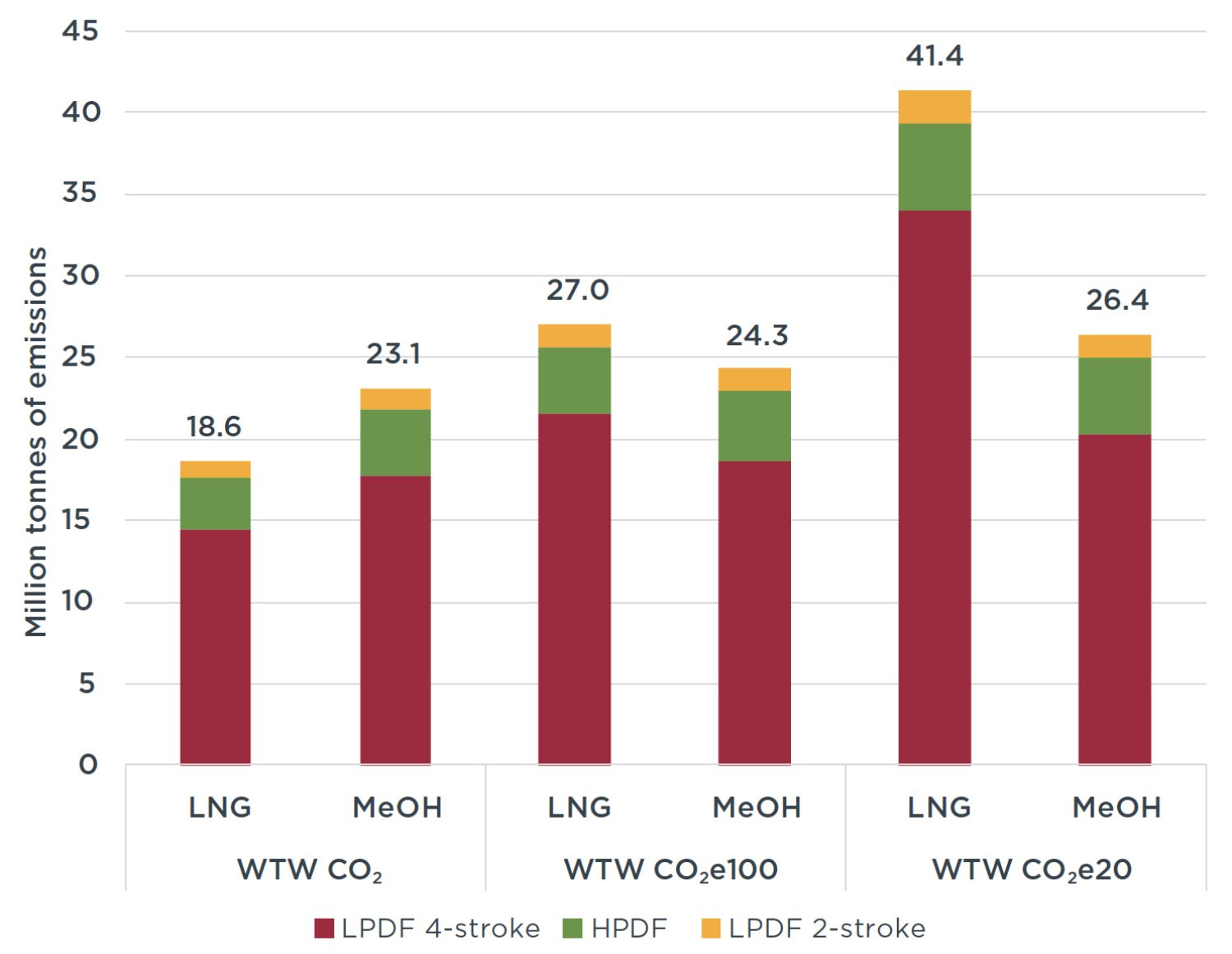Potential CO2 reductions under the Energy Efficiency Existing Ship Index
Working Paper
How updating IMO regulations can promote lower greenhouse gas emissions from ships
As currently designed, the International Maritime Organization (IMO)’s Energy Efficiency Design Index (EEDI) requires only that new ships emit less CO2 over time and does not cover emissions of other greenhouse gases (GHGs), including potent ones such as methane. The IMO is considering how to update the EEDI and this paper models and compares the attained EEDI scores of large container and cruise ships using different fuel and engine combinations. It then explores the impact of revising the EEDI in two ways: regulating carbon dioxide equivalent (CO2e) emissions and regulating well-to-wake (WTW) emissions. Ultimately, the authors recommend that the EEDI begin to regulate CO2e based on 20-year global warming potentials (CO2e20) in phase 4, on a tank-to-wake (TTW) basis.
Indeed, the results highlight the risk of implementing stricter TTW CO2 intensity standards in EEDI’s next phase without accounting for other climate pollutants. This could increase GHG emissions from ships by rewarding the use of liquefied natural gas (LNG), including in high-methane-slip engines, even though lower TTW and WTW CO2e emissions could be achieved using methanol (MeOH) or using LNG in low-methane-slip engines.
When the entire WTW cycle is considered, the authors estimate that if all of the ships using dual-fuel LNG engines in 2019 had been powered by either low-methane-slip engines or MeOH, their WTW CO2e20 emissions would have been approximately 36% lower (see right-hand panel of the figure).

Figure. Comparing estimated 2019 WTW emissions from LNG-fueled ships using LPDF and HPD engines to what they would have been if they had been fueled by methanol.
Regulating based on TTW CO2e20 in the EEDI’s fourth phase would encourage the use of LNG only in low-methane-slip engines or the use of MeOH, but would not protect against the possibility of using fuels that have low or zero TTW emissions but high well-to-tank (WTT) emissions, such as hydrogen made from fossil sources (i.e., gray hydrogen). Other regulations will be needed to control WTW emissions that account for both WTT and TTW emissions.
